
Revista de Ciencias Ambientales (Trop J Environ Sci). (Enero-Junio, 2018). EISSN: 2215-3896. Vol 52(1): 1-26.
DOI: http://dx.doi.org/10.15359/rca.52-1.3
URL: www.revistas.una.ac.cr/ambientales
EMAIL: revista.ambientales@una.cr
Community Use and Knowledge of Algarrobo (Prosopis pallida) and Implications for Peruvian Dry Forest Conservation
Uso y conocimiento comunitario del algarrobo (Prosopis pallida) e implicaciones para la conservación del bosque seco peruano
Johanna Depenthal
Master’s candidate in Environmental Management with a concentration in Ecosystem Science and Conservation at Duke University; ORCID: 0000-0003-4560-0862, johanna.depenthal@duke.edu
Laura S. Meitzner Yoder
b Doctorate in Forestry and Environmental Studies; researcher and professor at Wheaton College, IL, laura.yoder@wheaton.edu
Received: June 1st, 2017. Accepted: August 11th, 2017. Corrected: September 11th, 2017. Published: January 1st, 2018.
Abstract
Algarrobo (Prosopis pallida Kunth) is the keystone species in Peru’s highly threatened northern dry forests. Though uniquely adapted to thrive in arid environments, algarrobo extent along the Peruvian coast and particularly in La Libertad region has been drastically reduced by urban growth, agricultural expansion, and wood harvesting. Effective conservation of surviving dry forests in La Libertad will require initiatives grounded in field-based knowledge of surrounding communities’ interactions with algarrobo and their understanding of the trees’ importance. This research investigates how residents of distinct communities in or near the town of San Pedro de Lloc in La Libertad, know, use, and value algarrobo in three nearby dry forests. Methods include interviews with community residents and key stakeholders, as well as observation visits to local forests. Our results indicate that primary current uses of algarrobo include widespread domestic consumption of firewood, charcoal production for commercial use, and dependence on algarrobo dry forests as livestock forage. Community residents also value algarrobo trees for their ecological roles in producing oxygen, preventing the encroachment of sand dunes into neighborhoods, and as cultural patrimony. Building on these findings, we suggest a range of concrete ways in which local knowledge and use of algarrobo can support the conservation of this unique and fast-disappearing forest ecosystem.
Keywords: charcoal, dry forest management, environmental values, firewood, La Libertad.
Resumen
El algarrobo (Prosopis pallida Kunth) es la especie clave del bosque seco norteño de Perú, un ecosistema forestal muy amenazado. El algarrobo es únicamente adaptado para florecer en ambientes áridos, pero aun así su alcance en la costa peruana y particularmente en la región de La Libertad ha sido reducido drásticamente por la urbanización, la expansión agrícola, y la cosecha de madera. La conservación efectiva de los bosques secos sobrevivientes de La Libertad requerirá iniciativas basadas en conocimiento de la interacción de las comunidades cercanas con el algarrobo y su entendimiento de la importancia de dichos árboles. Esta investigación estudia cómo integrantes de distintas comunidades en el pueblo de San Pedro de Lloc o cerca de este, en la región de La Libertad, conocen, usan, y valoran al algarrobo en tres bosques secos locales. Los métodos de investigación incluyen entrevistas con habitantes de la comunidad y depositarios claves, además de visitas a los bosques. Nuestros resultados indican que los principales usos actuales del algarrobo incluyen el común empleo doméstico de la leña, la producción del carbón para fines comerciales y dependencia a los bosques secos del algarrobo como alimento para ganados. Personas entrevistadas también valoran a los algarrobos por su papel ecológico en la producción del oxígeno, la prevención de intrusión de dunas de arena a sus comunidades y como patrimonio cultural. Basadas en los resultados de esta investigación, nombramos algunas sugerencias concretas respecto a cómo el conocimiento y uso de los bosques secos por parte de la comunidad pueden ser usados para apoyar la conservación de este ecosistema único y tan amenazado.
Palabras claves: carbón vegetal, gestión del bosque seco, La Libertad, leña, valores ambientales.
1. Introduction
1.1. Context
Known in northern Peru as algarrobo, Prosopis pallida Kunth is one of the most ecologically, culturally and economically valuable trees of the Peruvian dry forest. Referred to as algarroba, mesquite, carob, kiawe, or huarango in other regions, algarrobo is a leguminous tree native to western South America distinctly recognizable by its strikingly contorted trunks, tiny leaflets, yellow fruit pods, spreading growth form and dense reddish-brown heartwood (Gallaher and Merlin, 2010; Pasiecznik, 2001; Whaley et al., 2010). Pasiecznik describes Prosopis pallida as one of the two “most economically and ecologically important tree species in arid and semi-arid zones of the world” (2001, p. vii). Algarrobo plays a crucial and primary role in Peru’s dry forests, which are still recognized as “among the most threatened and least studied of the world’s forested ecosystems” (Blackie et al., 2014, p. 1). Earlier studies of Prosopis include those by Griffith (1961) and Weber (1977). In the northern La Libertad region of Peru, algarrobo is used as a cooking fuel, source of medicinal algarrobina syrup, food for sheep and cattle, and nation-wide as charcoal in rotisserie chicken restaurants.
1.2. Plant description, ecological role, and national extent
Algarrobo heartwood is dense and highly resinous with a distinctly reddish-brown color, while the outer sapwood is honey-colored. Blooming in Peru during July and August, algarrobo produce yellow pods 13-25 cm long in December through February (Pasiecznik, 2001). Often demonstrating highly contorted and even spiraled trunks, these extremely saline-tolerant trees are believed to have a lifespan of up to 1 000 years (Pasiecznik, 2001; Whaley et al., 2010). Algarrobo’s remarkable vertical taproots up to 53 m long enable it to survive in La Libertad region, which averages around 5 mm of rain in non-El Niño years (Instituto Geofísico del Perú; Gallaher and Merlin, 2010; Whaley et al., 2010). El Niño Southern Oscillation plays an important role in the propagation of algarrobo, as the intense rains every 2-7 years prompt seed sprouting and support the establishment of young plants (NOAA, n.d.). As a keystone species of the Peruvian dry forest, algarrobo benefits other plant species by increasing soil nitrogen and organic content (Pasiecznik, 2001; Whaley et al., 2010), reducing soil salinity and alkalinity, and increasing phosphorous and carbon levels (Aggarwal et al., 1976; Singh, 1996). In addition to its positive effects on soil composition, algarrobo also affects the dry forest microclimatic through shading and humidity capture. Plant species that benefit from algarrobo include cuncuno/tetillo (Vallesia glabra), sapote (Colicodendron scabridum), asote de Cristo (Scutia spicata) and vichayo (Capparis ovalifolia). A diverse assortment of fauna makes it home in dry forests as well, including foxes, songbirds, woodpeckers, parrotlets and reptiles such as iguanas, snakes, and ground lizards, including the rare Peru Desert Tegu (Dicrodon spp.), known locally as a cañán.
Native to western South America and found primarily in Peru and Ecuador, P. pallida has been introduced as widely as Hawaii and Puerto Rico. According to Peru’s Instituto Nacional de Recursos Naturales (SERFOR, 2015), an estimated 3 230 263 ha of mostly-Prosopis dry forests survive in northern Peru, with 67 % of the forests in the Piura region, 14 % in the Tumbes region and 19 % in the Lambayeque region, immediately north of La Libertad (Schwartz, 2004). Despite the national-level recognition of algarrobo’s critical ecological value and SERFOR’s past research and reforestation projects in some northern regions, algarrobo harvest for charcoal consumption in Peru’s urban centers continues at a staggering scale. The demand for algarrobo charcoal is driven by a strong cultural taste for the rich flavor algarrobo wood imparts to food, especially to pollo a la brasa (“chicken over the embers”), a nationally celebrated roast chicken dish served over potato fries at innumerable pollerías (“rotisserie chicken restaurants”) in Trujillo, Pacasmayo, Chiclayo and throughout coastal Peru. The importance of algarrobo as a domestic and commercial fuelwood in Peru is difficult to overstate. A 1995 study estimated that Prosopis fuelwood constituted more than 70 % of domestic fuel requirements in rural Peru (Díaz-Celis, 1995). Nearly 20 years later, another study estimated that algarrobo dry forests in northern Peru supply 48 % of the charcoal sold in Lima, a city of 7,6 million people (Bennett-Curry et al., 2013), while González estimated that dry forests provide 60 % of Lima’s charcoal supply (as cited in Barrena et al., 2010). National census data from 2007 reports that 621 683 people in La Libertad alone, or approximately 38,9 % of the region’s total population, use firewood or charcoal as their primary fuel source for cooking, while nation-wide that number is estimated at 2 800 000 people (Instituto Nacional de Estadística e Informática, 2010; La Torre-Cuadros and Menton, 2016). While significant, though threatened, dry forests survive in northern regions of Piura and Lambayeque, deforestation of algarrobo trees and the dry forests they comprise in Peru’s La Libertad region has been almost total. Information published by the Peruvian forestry service, Servicio Nacional Forestal y de Fauna Silvestre (SERFOR), on algarrobo production in four northern departments of Peru show that La Libertad produced only 0,1 % of national production between 2000 and 2010 (Ministerio de Agricultura, 2012). Bos’s 2015 study reviewed 10 accessible algarrobo forest patches totaling over 1 960 ha. Of those, Bos noted that Cañoncillo, at 525 ha, is probably one of La Libertad’s largest surviving dry forests, although there may also be algarrobo dry forest patches of unknown sizes in the Calipuy National Reserve and the Higuerón forest in the Ascope province (Bos, 2015).
1.3. Legality of woodcutting
Algarrobo is officially recognized as patrimonio ecológico (“ecological heritage”) of Peru, and the Peruvian government, on both national and regional levels, has long expressed concern about unsustainable algarrobo wood harvesting. From 1993 to 2008, the harvesting and sale of algarrobo was prohibited in La Libertad, Lambayeque, Tumbes, and Piura by Law 26258 (Bennett-Curry et al., 2013). In 2009, Law 3543 was proposed, suggesting a total ten-year national ban on the harvesting and sale of algarrobo and a number of other dry forest species, but its approval is still pending (Bos, 2015). Fundamentally, algarrobo trees are viewed as state property, meaning that any algarrobo tree cutting outside of an approved management plan is generally considered a crime against the state or as a delito contra los recursos naturales (“crime against natural resources”). Case files housed in the provincial government office of Pacasmayo of individuals changed with illegal woodcutting illustrated this. One particular case from 2014 charged a local resident with “indiscriminate woodcutting” in Cañoncillo and instigated a preliminary investigation to determine whether the accused’s actions were indeed criminal in accordance with Law 27307, “Law of Forestry and Forest Wildlife,” as well as Law 28611, “General Law of the Environment.” Though Cañoncillo is a private conservation area, the Peruvian State was listed as the aggrieved party.
While regulations such as Law 29763 affirm the rights of citizens to use and enjoy forests, they require tree harvesting in dry forests to meet national sustainability standards that are not procedurally defined by law, leaving their interpretation and permissibility up to local authorities. This history of protection and the current legal ambiguity around harvesting has pushed algarrobo harvesting into a practice which is widespread but not discussed or conducted openly; while the legality of community harvesting remains unclear to local residents, they treated algarrobo harvesting as an illicit activity. The 29763’s Reglamento 018-2015-MINAGRI, approved while this research was being conducted, dedicates article 60 to the management of dry forests, permitting the removal of pruned branches even from low-density dry forests (SERFOR).
1.4. Research questions
The following research was conducted in partnership with national environmental non-governmental organization A Rocha Perú to assist their development of a forest conservation program around San Pedro de Lloc (UTM 17M 665 204 m E and 9 178 513 m N), a small agricultural town in northern La Libertad surrounded by significant stands of dry forest, as can be seen in Figure 1 below. The largest of the forests is Cañoncillo, with a coverage of 525 ha, with the adjacent, smaller forest of Tronco Prieto, which is about 40 ha in size (Bos, 2015). Also significant is what is referred to here as the San Pedro de Lloc forest, approximately 40 ha in size and located less than 0,3 km from the Pan-American Highway on the southern side of San Pedro de Lloc (Bos, 2015). Forest conservation and environmental education literature have demonstrated that people’s knowledge of forests gained through personal experience is an important factor in their motivation and commitment to conservation activities (Campos and Ehringhaus, 2003; Miller, 2005; Saylor et al., 2017). Based on the premise that the particular ways that nearby communities know, use and value algarrobo have specific implications for the development and implementation of effective forest conservation initiatives, our research centered around the following questions: How do community residents and representatives of key local agencies know and describe forests? Are algarrobo trees and dry forests seen as valuable, and if so, for what reasons? What drives use of algarrobo as firewood and as charcoal? Do different groups value algarrobo trees and dry forests for different reasons? How can this information be used to make local conservation initiatives more effective?
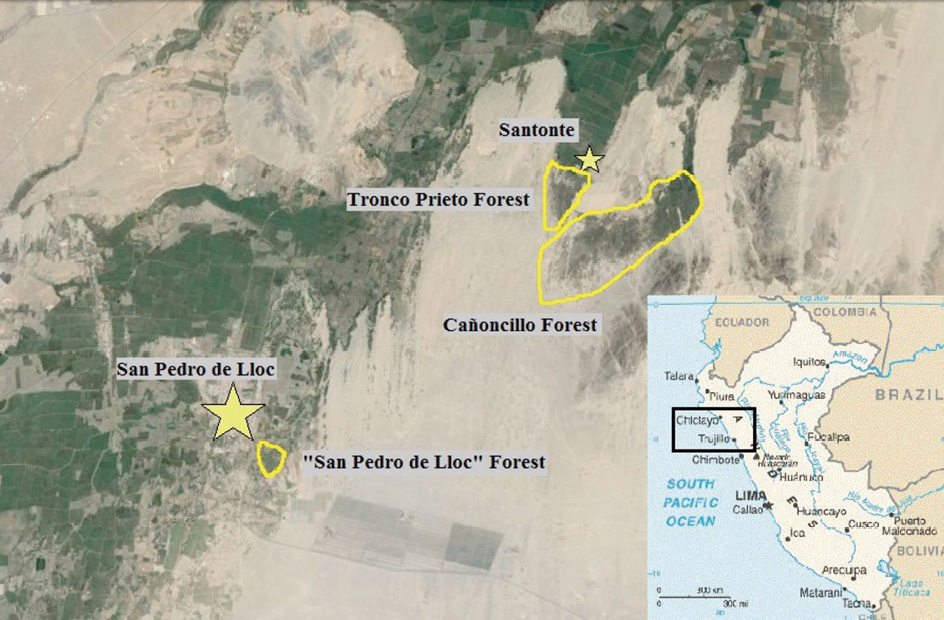
Figure 1. Map of San Pedro de Lloc and key dry forests among sand dunes. Inset: map of Peru. (Image credits: CIA World Factbook, Google Earth)
2. Methodology
2.1. Methods
Between July and November of 2015, I (Johanna Depenthal) made 16 visits to San Pedro de Lloc and the surrounding area to gather qualitative and quantitative data using three research methodologies: 22 structured interviews conducted with community residents, eight semi-structured group interviews with representatives of prominent community organizations such as the provincial government and the peasant-farmers’ association and seven observation visits to local dry forests, often accompanied by community residents residing nearby. Together, information gathered from these various methodologies conveys a complex situation in which algarrobo trees are valued even as they are exploited for multiple uses.
2.2. Interviews with residents of adjacent communities
A total of 22 forty-five-minute interviews were conducted during October-November 2015: 13 in San Pedro de Lloc in three distinct neighborhoods (Amauta, El Rázuri, and La Venturosa), eight in the village of Santonte, and one with a resident of San José. Respondents included 16 women and eight men from 29-85 years old, with 13 of them under 50 years of age. Interviews were conducted in five to ten percent of households in a community. They were recruited both randomly by going door-to-door and by referral of other respondents using the “snowball” sampling strategy.
The village of Santonte functions as the gateway to the dry forest of Tronco Prieto and is the home of local forest conservation group La Asociación Muchik. The Amauta and El Rázuri neighborhoods are both adjacent to the San Pedro de Lloc forest, as can be seen in Figure 2, but have distinctive histories and demographics. Amauta, with approximately 50 brightly painted, two-story cement block houses, was established about 30 years ago by the municipal government as housing for school teachers. El Rázuri, divided from Amauta by a sand lane and composed of single-story earthen brick buildings, originated approximately six years ago when the people who became inhabitants cleared the trees and staged an overnight group occupation of government land. Residents of Amauta refer to this event as “the invasion.” Before this occupation, El Rázuri was a forested lot known as El Algarrobal (“place of the Algarrobos”).
During the first part of the interview respondents were asked to describe how their communities valued, used, and had knowledge of local dry forests, while later questions focused specifically on firewood and charcoal harvesting and use. All potential respondents were presented with and read a consent form before being invited to participate in an interview. Because of the ambiguous legality of cutting algarrobo, no questions were asked about individuals’ wood collecting habits, and no potentially self-indicting responses were recorded. This research was conducted with the approval of the Institutional Review Board (IRB) of Wheaton College, IL.
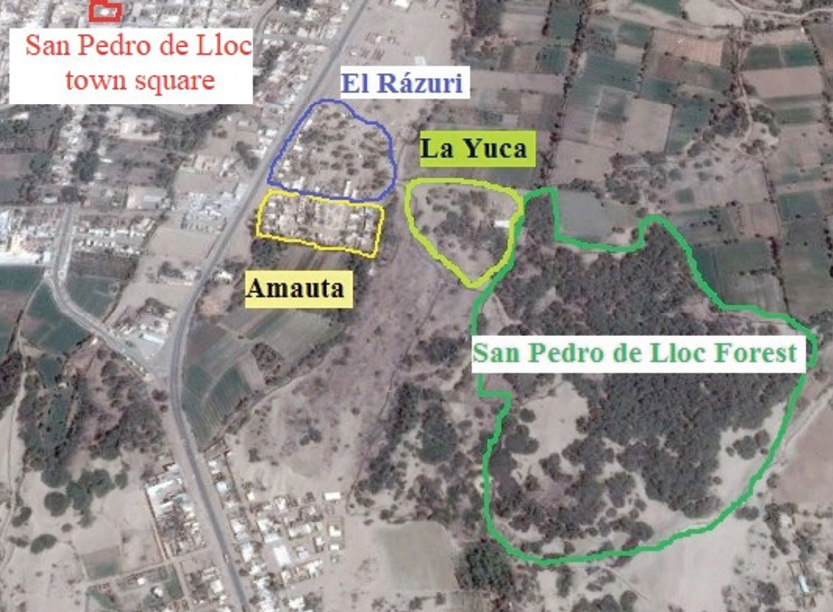
Figure 2. Proximity of the Amauta and El Rázuri communities to the San Pedro de Lloc forest
2.3. Semi-structured interviews with representatives of the local government and community organizations
The municipal government of San Pedro de Lloc and the provincial government of Pacasmayo are key actors in the area, as are the Cooperativa Agraria de Usuarios Tecapa (CAU-Tecapa) which manages the forest of Cañoncillo, and the Comunidad Campesina de San Pedro de Lloc (or Peasant Farmers’ Association of San Pedro de Lloc, hereafter referred to as the CCSPLL), which reportedly manages 73 000 hectares of land. During the course of research, several meetings and interviews were held between A Rocha Perú staff, representatives of the municipal and provincial government (as San Pedro de Lloc is the capital of the province of Pacasmayo, the municipal and provincial governments overlap significantly), and leadership of the CCSPLL to discuss potential partnership in forest conservation initiatives. These conversations provided an important glimpse into regional stakeholders’ perspectives on the value of forests.
2.4. Forest visits
Research included five observation visits to the San Pedro de Lloc forest and guided visits to Tronco Prieto and Cañoncillo. Observations included animal and plant identification, descriptions of ecological relationships, signs of fuelwood harvesting and charcoal production pits (Figure 3), forest uses such as livestock pasturing, conversations with individuals encountered in forests, and locations of largest algarrobo trees (Figure 4). Global Positioning System (GPS) mapping of forest borders and of brush fences within the forest was also conducted in the San Pedro de Lloc forest.
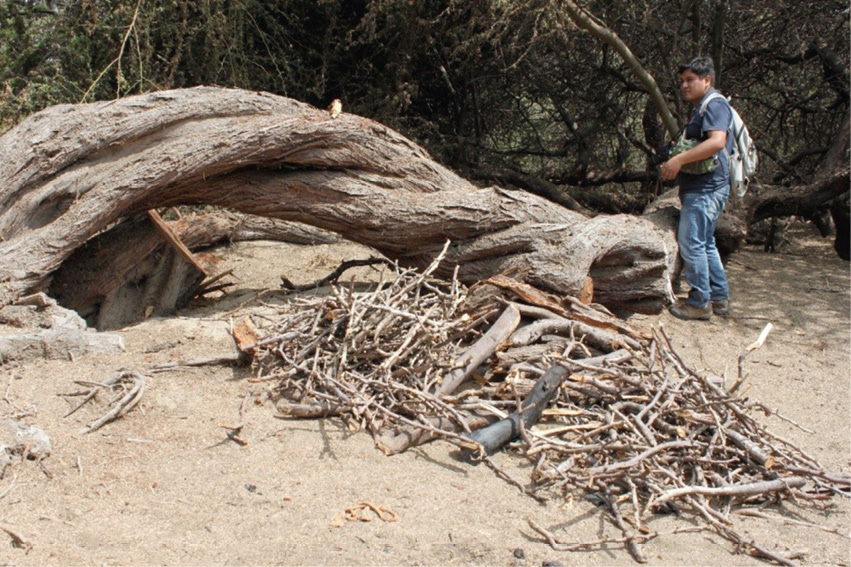
Figure 3. A Rocha Perú personnel inspecting algarrobo fuelwood piles next to a charcoal pit
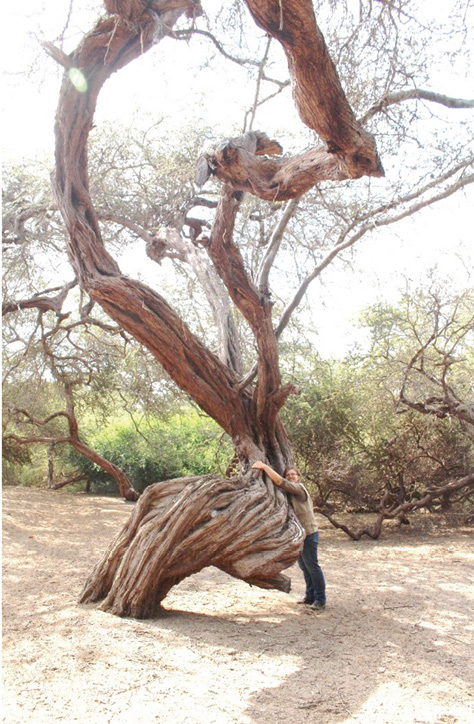
Figure 4. One of the largest algarrobo trees in the San Pedro de Lloc forest, with author Johanna Depenthal for scale. (Photo credit: Hugo Marcos Loyola)
3. Results
3.1. Community knowledge
While almost every interview respondent professed familiarity with local dry forests, respondents’ ways of knowing the forest differed markedly. Respondents’ knowledge stemmed either from personal experience in the forest or “mythology,” a way of knowing and evaluating the forest based on hearsay, stories, and legends. Two respondents from Santonte actively engaged in forest conservation work expressed great personal familiarity with the forest of Tronco Prieto: one mentioned that growing up, it was as if the forest was part of the respondents’ home, while the other expressed that he was practically raised in the forest. In contrast, where personal experience of the San Pedro de Lloc forest was apparently low, sentiment towards the forest was more ambivalent. Several respondents living in the Amauta and El Rázuri neighborhoods adjacent to the forest stated they did not know if the forest had a name, and while a few of them told us that they had walked in the forest in the past, no one said they did so now. This lack of personal experience with the forest may both result from and cause fear of the forest, as multiple people mentioned that the body of a murdered woman had been discovered in the forest a few years before. Despite this, we did encounter multiple people, most commonly sheep herders and their flocks, during visits to the San Pedro de Lloc forest who spend time in the forest. Interview respondents’ knowledge of the forest of Cañoncillo was also largely based on hearsay, especially surrounding the locally prominent mythology of a “gringa” siren character who is said to live in one of the forests’ lagoons and to lure the unsuspecting to death by drowning.
3.2. Community and commercial uses
Respondents provided multiple uses for various algarrobo parts, as seen in Table 1. Some uses listed by respondents are still part of the daily lives of communities in and around San Pedro de Lloc, while others were largely historic or were products used but not necessarily produced within the community. Uses of algarrobo in San Pedro de Lloc correlate with those described for other Prosopis species in northern and southern Peru (Whaley et al., 2010; Rodríguez and Uhlenbrock, 2002). The following sections detail each category of algarrobo use, beginning with those most frequently mentioned by respondents.
Table 1. Local uses for algarrobo (Prosopis pallida) named by interview respondents
|
Fuel |
Medicinal |
Animal food |
Material |
Other |
|
|
Trunk |
Firewood Charcoal |
Construction Furniture Lintels Benches |
Gates |
||
|
Branches |
Firewood Candles |
Fences Corrales |
|||
|
Bark |
Firewood |
Unspecified |
|||
|
Sap |
Lip sores Toothache Tooth extraction |
Colors wood |
|||
|
Leaves |
Burned with trash |
Livestock |
|||
|
Flowers |
Bees Birds Lizards |
Produce fruit Honey |
|||
|
Fruit |
Algarrobina used to treat anemia |
Cows Pigs Horses Guinea pigs Lizards |
Algarrobina Chicha Algarrobo honey Molasses Sold |
||
|
Seeds |
Cows |
Coffee substitute New plants Sold for planting |
|||
|
Roots |
Firewood |
Aphrodisiac |
Agricultural tools Ax handles |
Small roots smoked |
3.2.1. Fuelwood
Of the variety of uses for algarrobo mentioned by respondents in Table 1, algarrobo’s role as fuelwood was mentioned in every interview and was highly valued by many of them. It was clear in every interview that algarrobo is an important fuelwood resource in and around San Pedro de Lloc. Yet respondents’ descriptions of the ways algarrobo firewood and charcoal are harvested, used, and traded also made it clear that local domestic use and national commercial use of algarrobo are two distinct issues which should not be conflated if they are to be effectively addressed in conservation initiatives.
Despite its ambiguous legality, harvesting algarrobo for charcoal production is a flourishing underground trade. Though it is uncertain whether wood cut from Cañoncillo and Santonte was mostly destined to be processed into charcoal or sold as firewood, several respondents in Santonte mentioned trucks loaded with wood leaving the forest early in the morning. Our walks through the San Pedro de Lloc forest passed two active algarrobo charcoal-production pits. Our guide at Cañoncillo told us that algarrobo is “loved by the [wood] cutters because its charcoal is very expensive,” probably because algarrobo is “very, very, very loved by pollerías (rotisserie chicken restaurants) and bakeries.” Charcoal price as reported by respondents varied between S/. 0,80 to S/. 1,00 (about $0,30 USD) per kilogram, and between S/. 80 to S/. 100 (about $25-30 USD) per sack. Though several small stores in San Pedro de Lloc advertised charcoal, respondents predominantly described algarrobo charcoal as being sold outside San Pedro de Lloc to large urban centers such as Pacasmayo and even Trujillo and Chiclayo for use in pollerías and bakeries, as well as for brick-production, metalworking and grilling anticuchos (“meat kebabs”).
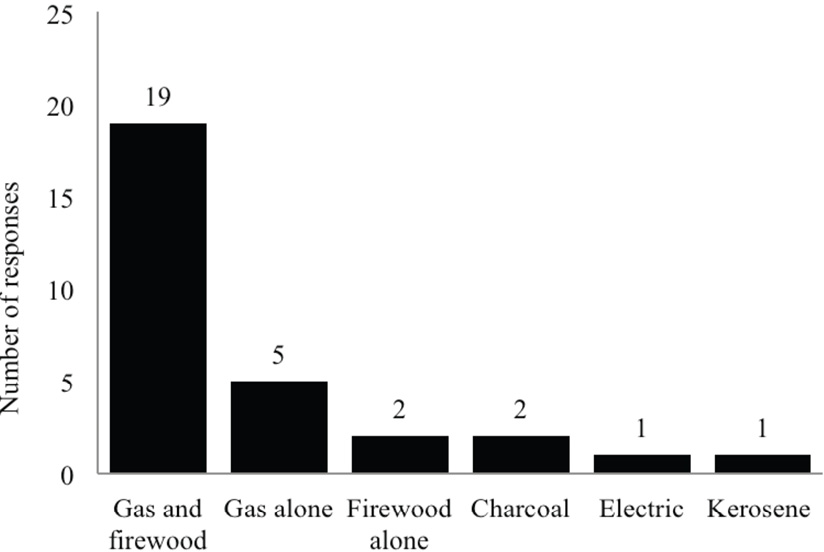
Figure 5. Respondents’ household cooking fuels by type (n = 26, multiple answers permitted)
In contrast to charcoal, respondents frequently described algarrobo firewood as being used locally, mostly in homes but also in some bakeries and restaurants. As seen in Figure 5, while only 7,7 % of respondents cooked solely using firewood, 73,1 % reported cooking over both gas and firewood, meaning 80,8 % of respondents cooked at least occasionally with algarrobo firewood. Use of firewood is driven by both cultural and economic factors, and relatively low availability of alternative tree species. Cultural and flavor preferences lead gas stove-owning households to continue cooking with firewood on some occasions. Algarrobo firewood was repeatedly praised for the rich flavor the smoke imparts to food, and several respondents stated that gas-cooked food had a very unpleasant flavor by contrast. “[Algarrobo firewood] results in a richer flavor in the food,” said one respondent, while another asserted that “Algarrobo firewood is essential for good food!”
Several trends for algarrobo wood use emerged across communities. Respondents preferred cooking over algarrobo firewood for dishes such as stewed duck or rotisserie chicken, and also for special occasions involving large numbers of people, such as birthdays, weddings, and family dinners. As one respondent from La Venturosa put it, “When cooking a cow, you must use firewood. But for a chicken, just use gas.” My hosts in Santonte used a gas stove to rapidly heat up water for breakfast and to prepare a small late-night meal, but used algarrobo firewood to prepare a meal of pan-fried fish and rice Sunday afternoon when time permitted and flavor was more important (Figure 6).
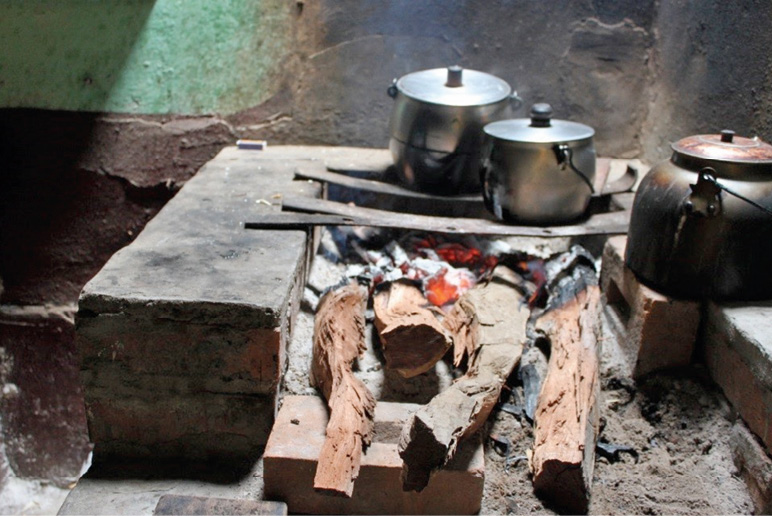
Figure 6. Cooking over rajas of algarrobo on an open hearth in Santonte
Financial status is also a significant factor in cooking fuel choice. Algarrobo wood was praised by respondents for its dense hardness, “powerful temperature,” and long-lasting heat. The high caloric value of algarrobo wood, reported as 4 216 to 4 800 kcal/kg (Khan et al., 1986; NAS, 1980 cited in Pasiecznik, 2001), made it the preferred fuel for food items such as lentils and beans, which are both time consuming and expensive to cook on a gas stove. Two respondents in El Rázuri directly correlated their finances and firewood use: “When there’s money I cook with gas, but the food turns out tasting richer with firewood,” and “When one wants to save on gas, one lights the firewood.” But while financial status dictates whether individuals can afford to buy a gas stove or how often they can afford to use it, the flavor preferences and cultural factors discussed above counteract a direct inverse relationship between economic status and firewood use. The cost of gas canisters also varies: in roadside Amauta and El Rázuri gas canisters cost S/. 34.50-35 ($11.04-$11.20 USD), while in remote Santonte, the prices increased to S/. 35-39 ($11.20-12.50 USD).
Three respondents named negative health effects of cooking with firewood as a reason for using gas. While several asserted that algarrobo firewood smokes relatively little, one wealthier elderly person in La Venturosa stated that she only cooks with gas “because the smoke makes the lungs bad.” During a different interview a middle-aged woman in El Rázuri commented that she did not like to cook with firewood because it is “bad for vision.” A man also participating in the interview agreed, and added, “[and] cancer.” An elderly respondent in Santonte also mentioned that the smoke from algarrobo firewood is bad for the eyes and said her doctor had warned her against cooking with it. The respondent continued to do so, however, because she feared burning herself with the gas stove and depended on others to light it. Another respondent mentioned that she preferred using charcoal over firewood because it produces less smoke, but did not explicitly connect firewood smoke to health effects.
Terminology for units of firewood differed between communities, with significant implications. In the San Pedro de Lloc neighborhoods, firewood was generally described as sold in palos, rounded branches typically about the length and width of an adult’s forearm. Respondents from Santonte, however, only described firewood as being sold by the raja, a split piece of wood about 80 cm long and up to 10 cm in diameter, or by the carga, the equivalent of a donkey load’s worth of wood. Respondents frequently told us that the woodcutters went to Cañoncillo or other dry forests early in the morning, cut wood (including green wood, which reportedly produces a denser, higher quality charcoal) using hatchets, and then transported the wood to San Pedro de Lloc or the surrounding villages by donkey. The exact size of a carga is unknown. Oudman (2004) states that donkeys can typically carry a 40-80 kg load, and Pasiecznick (2001) reports algarrobo density ranging from 710-910 kg/m3 for dry wood to 1 050-1 250 kg/m3 for green wood. One source mentions a carga containing about 14 palos (Guerrero, 2010), although a donkey loaded with algarrobo wood being harvested from Cañoncillo in a photo published by a Peruvian news agency appears to be carrying 11 palos on only one side of its saddle, for an estimated 22 palos total per trip (Anonymous, 2010). Quantifying rates of algarrobo fuelwood use in homes was difficult, but three respondents indicated using two to four rajas or palos for domestic cooking use on an average day.
3.2.2. Forage
The second most common use mentioned was of algarrobo as livestock forage, which supports Rodríguez and Uhlenbrock’s (2002) observation that algarrobo is critically important for goat farmers in northern Peru. Respondents told us that herds of goats, sheep, and even cattle graze in local dry forests, especially when the algarrobo are in fruit. One respondent descriptively reminisced how vacas flacas (“thin cattle”) get fat during algarrobo fruiting seasons. In addition to allowing livestock to graze on fallen, raw pods, algarrobo fruit is fed to livestock in two other forms: as dried pods, and as sugary molasses mixed into dry feed. Four respondents specifically described the sale of algarrobo pods (typically dried on hot sand and sold by the sackful), while a retired respondent stated that sale of algarrobo pods significantly supplements his small government pension.
3.2.3. Historic or largely discontinued uses: algarrobina, building material, and seed
Although this use is now largely abandoned, algarrobo pods were used to make a sweet syrup known as algarrobina. Algarrobina is still often used in Peru as a sweetener or as cocktail ingredient, but this was not mentioned by interviewees in our region. Instead, several mentioned algarrobina as a medicinal tonic, and two explained that algarrobina’s usefulness for treating anemia in women and children (sometimes mixed into a drink with egg and honey) was due to its high vitamin B5 content. While generally familiar with algarrobo products such as algarrobina and animal feed, respondents generally stated that algarrobo pods were not harvested in their community anymore. When asked why algarrobina was no longer produced in Santonte, one elderly answered: “Because they don’t know how to make [it].” The lack of local algarrobina production from adjacent forests may be due in part to lack of knowledge and equipment, but is also likely due to the fact that algarrobina is now produced commercially further north around Piura and is inexpensively available.
Other medicinal uses of algarrobo products mentioned by interviewees included dabbing algarrobo sap on lip sores and chewing algarrobo gum to numb toothache or even to extract rotten teeth. One middle-aged person with a bright if somewhat toothless smile stated that she had removed a molar using algarrobo gum. A group of male respondents mentioned smoking small algarrobo roots as teenagers. They reported that the roots produce drug-like effects and da valor (lit., “give bravery”) at night, which an A Rocha Perú field officer interpreted as a euphemism for aphrodisiac properties. It was also used in chicha, a term for traditional Peruvian fermented drinks. Miel del algarrobo literally translates to “algarrobo honey,” but it was unclear whether this referred to the honeybee product or was sometimes conflated with algarrobina.
Several houses where interviews were conducted featured algarrobo beams or lintels, but respondents said that use of algarrobo in home construction has largely been abandoned with the advent of modern construction materials.
3.2.4. Tourism
The forest of El Cañoncillo is a private conservation area locally billed as a tourist attraction. Renowned for its rare feature of three small lagoons set in an algarrobo forest, Cañoncillo charges a small fee for entry and offers both private tours of the natural features of the forest and sports such as sandboarding. It was clear that Cañoncillo’s use as a tourist attraction was well known by respondents. Two respondents from Santonte commented negatively on the way in which access to Cañoncillo (and the resulting income) is controlled by the managing cooperative, while one also mentioned that tourism was part of a proposed forest management plan for Tronco Prieto. Another respondent in San Pedro de Lloc mentioned that he had unsuccessfully petitioned to protect a small forest he owned as a tourist attraction. Beyond these comments, however, respondents did not mention tourism as a “use” for Cañoncillo or other local dry forests.
3.3. Value of dry forests to community residents and government officials: ecological role and cultural patrimony
“Why are dry forests valuable to you and your family?” “Thanks to these plants, we breathe pure air!” exclaimed one village respondent who lives in a forest-adjacent community. Many of our respondents shared their enthusiasm: all but one of the 22 community residents readily stated that local dry forests are valuable for one reason or another, and a total of eight respondents named algarrobo’s role in producing oxygen or purifying air as a key reason for valuing local dry forests, as shown below (Figure 7).
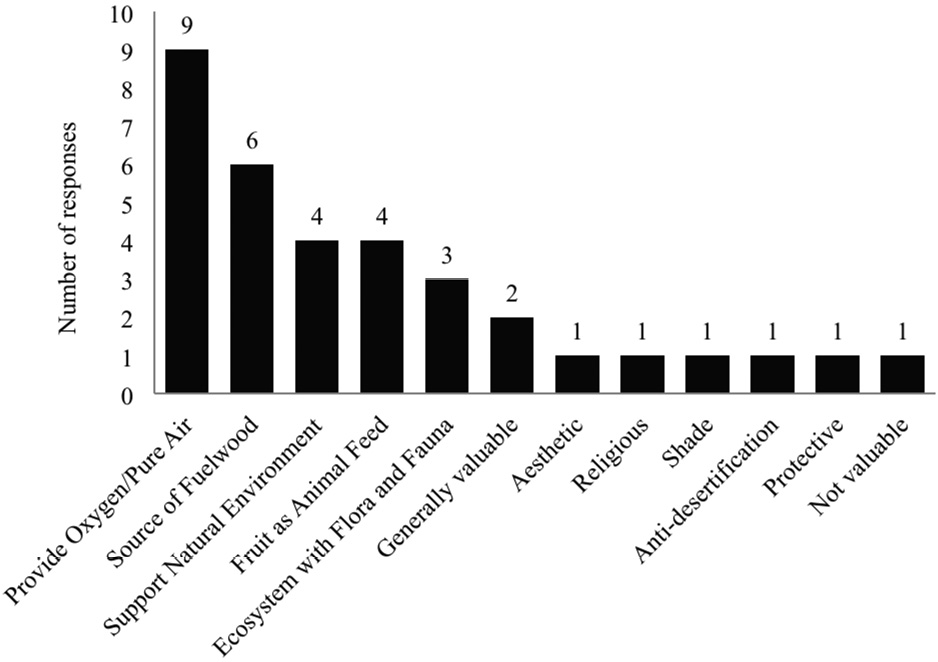
Figure 7. Community residents’ reasons for valuing algarrobo and local dry forests
(n = 22, multiple answers permitted)
Government officials and representatives of the CCSPLL also emphasized algarrobo’s role in oxygen production, often referring to the dry forests as the region’s “lungs,” a term popular media often applies to forests (ironically forests have the inverse ecological function of lungs, which take in oxygen and give off carbon dioxide). Other reasons government officials and CCSPLL leadership gave for valuing forests diverged widely from each other and from interview respondents, however, demonstrating that rhetoric about forests changes with direct proximity and familiarity.
Officials from the provincial government of Pacasmayo especially stressed the importance of forests as national or cultural patrimonio, a word roughly equivalent to common or national heritage, inheritance, patrimony, and wealth. This situates the forests squarely within the domain of the nation-state, rather than acknowledging oversight by adjacent communities. When discussing the illegal sale of land, one government official lamented the loss of what he considered Peru’s heritage, stating ironically, “Heritage cannot be sold but we’re in Peru!” Yet, it is striking that none of the 22 community residents used the term patrimonio. Instead, community residents valued the forest for both ecological and utilitarian reasons, with the trees’ roles in oxygen production and as a source of fuelwood as the respective first and second most frequently mentioned reason for valuing dry forests; the third most mentioned reasons is a tie between its value as livestock forage and its value as natural environment and home for flora and fauna. Less frequently, community residents also indicated that dry forests and algarrobo had cultural, intrinsic, sentimental or aesthetic value. Two respondents placed nature in a religious framework, implying that trees and forests had intrinsic worth because they were created by God: one of them, a former schoolteacher living in Amauta, used to remind her Catholic schoolgirls during fieldtrips to Cañoncillo that the forest was “the nature that God has given us, and we have to care for her.”
The president of the CCSPLL also assured us that it was “very, very clear” to them that algarrobo has value as cultural patrimonio, but demonstrated more concern with the potential economic value of algarrobo. This was especially evident during meetings with representatives of A Rocha Perú. While A Rocha Perú personnel’s focus was on the conservation of existing forests and reforestation for ecological purposes, CCSPLL officers repeatedly proposed ideas for algarrobo production on a large scale, such as an algarrobo plantation with a built-in irrigation system. This is yet another vision for algarrobo forest ownership and use: not a natural forest on state-claimed land, or community-managed forest, but an industrial-scale commercial plantation containing permanent infrastructure.
A recent land use conflict between the CCSPLL and the provincial government of Pacasmayo demonstrated this difference in their institutional positioning. According to an official in the provincial government of Pacasmayo who is largely responsible for local forest conservation, the CCSPLL had planned to cut down “several thousand” algarrobo trees near Jatanca, a small town of about 200 people between San Pedro de Lloc and Santonte, in order to plant avocado trees. The provincial government had shut down the project, purportedly on the grounds of dry forest conservation, stating that while the land may belong to private owners, trees are state patrimony. While the CCSPLL expresses interest in dry forest conservation, they may value economic development over forest conservation when the interests conflict.
Notably overlooked in any interviews about algarrobo’s value, however, was substantive discussion of the ecological roles algarrobo roots play in preventing erosion and desertification or trees’ role in regulating hydrologic cycles. Sand nets along the Pan-American highway near San Pedro de Lloc testify to the constant dune migration caused by winds in the desert surrounding town. Several large dunes near San Pedro de Lloc are crowned by algarrobo trees, whose deep roots stabilize the dune even as their foliage intercepts airborne sand particles. Without these trees, the dunes could migrate into nearby farmers’ fields. Though mentioned by a provincial government official, the only local resident to hint at this valuable service performed by algarrobo was an elderly woman in Santonte, a town overshadowed by a massive bare sand dune. After mentioning that trees on the opposite side of the street had recently been cut down, she commented, “The wind carries the sand.” To clarify her intent, I asked, “If they cut the trees, what happens?” “Well,” she said, “[the sand] comes.”
4. Discussion
This study aims to understand community dry forest use and knowledge that can help shape conservation initiatives. Most interview respondents, including those dependent on algarrobo fuelwood, expressed a desire to protect the forests. In one memorable instance, our interview with a respondent who expressed great enthusiasm for the value of trees and forest conservation was interrupted when a man towing a wagon piled high with algarrobo firewood pulled up in front of the house and loudly asked where he should put the firewood. Flustered, our respondent ran to the open doorway and with much arm-waving, quickly shooed the man away before returning to continue the interview without explanation.
While this incident could be interpreted as a respondent attempting to give the “right answer” to an interviewer regardless of the respondents’ true beliefs and typical behaviors, we recognize this vignette as an illustration of the classic problem of conservation shared among peasant farmers and environmentally conscious people from diverse walks of life the world over: how individuals desire to preserve a resource, such as a highly threatened forest or fast-vanishing ecosystem, while simultaneously act in ways that may damage or destroy it. Yet, people who live in close proximity to forest resources and whose livelihoods are directly dependent on the adjacent forest’s use are in a special situation regarding conservation. They have most ready access to resource use, and yet are also they those who can most easily witness and experience resource decline. Different types of actors value forests differently, and more abstract reasons for valuing forests reflected lack of familiarity with and direct dependency on forests. For these reasons, respondents whose concern for the forest resulted from their direct use of the forest through fuelwood or livestock pasturing are potentially stronger partners in conservation than respondents who gave abstract responses such as oxygen production as reasons for forests’ value. Use of algarrobo firewood is driven not only by considerable cultural preference for algarrobo smoke flavor in food, but also by the relative low cost of firewood when compared with natural gas, especially for community residents who can harvest wood personally. Recognizing this is important for national conservation organizations such as A Rocha Perú, as it means that conservation-desire does exist in adjacent communities. Proper incentives or community pressure may tip the scales for individuals and lead them to adopt behaviors that result in forest conservation and sustainable growth for forested regions. The interviews with government officials and CCSPLL leaders also point to other potential initiatives, such as planting algarrobo trees to expand forested areas specifically for production of wood, forage, or other products that are of highest value to the adjacent residential communities.
Though adjacent community residents also valued the forests for ecological and use-based reasons, they never mentioned the forests as belonging to the nation as a whole, as provincial officials did through the language of patrimonio. Referring to local forests as national patrimony relocates the trees’ purpose from being a resource for concrete local use to an abstract national benefit, an action which elevates the ownership of the forests to a national level while diminishing the role and rights of local actors. Conservation organizations should be deliberate in deciding which reasons for conservation and rhetorical strategies they choose to employ; for example, responding to nearby residents’ top concerns for fuelwood and forage production is more likely to resonate with those communities than projecting government approaches that identify forests as an abstract national patrimony under theoretical guardianship of the state.
5. Conclusions
How do people in and around San Pedro de Lloc know, use and value algarrobo trees and dry forests? More respondents knew local forests more through secondhand accounts and legends than through personal experience. Firewood is regularly used alongside gas stoves in 73 % of respondents’ households, and exclusively in eight percent of households. Flavor preferences, cultural factors, and economic reasons all influence why and when algarrobo firewood is used. Community respondents valued local forest stands first for their role in producing oxygen, second as a source of fuelwood and third as a place for pasturing livestock and for its role as a natural environment and home to plant and animal species. Terminology used for units of firewood in different communities reflects distinct ways of harvesting wood, some of which may be more sustainable than others. Conversations with government officials and representatives of the CCSPLL demonstrated that abstract terms with forests often indicate lack of dependency on forests. Visits to local forests, especially to the San Pedro de Lloc forest, revealed a unique and ecologically rich ecosystem still in active use by nearby community residents as a livestock pasture and as a charcoal production site. Further research is needed to determine whether harvesting algarrobo firewood for domestic use, though widespread, is less detrimental to local dry forests than the algarrobo charcoal trade. Perhaps most significantly, the majority of community residents interviewed value forests and are in favor of conserving them, even as their use of algarrobo fuelwood may be detrimental to the forests.
What are the implications of this research for forest conservation initiatives in La Libertad? Based on our findings, we recommend a conservation plan that emphasizes increasing familiarity and personal exposure to dry forests for government and CCSPLL officials, children, and other citizens through guided tours and outings. This conservation plan could work closely with community residents who depend on algarrobo wood, forage and pods daily and emphasize sustainable harvesting and reforestation, while at the same time working with community leaders and government authorities to disincentivize and check charcoal production and trade. Rather than assuming that making gas or other alternative stove types available would eliminate firewood use, the organization could promote more fuel-efficient wood stove designs, teach community residents how to use them safely and promote awareness of the negative health effects of cooking over open fires. In addition to providing insight into how individuals in and around San Pedro de Lloc, Peru know, use and value algarrobo, this study provides a case study for how research on community knowledge can contribute to conservation program design.
6. Acknowledgements
We would like to thank Ramón Casana Araujo, Projects Director at A Rocha Perú, for proposing this subject and for his vital support during the research process. For their companionship and help recording and interpreting responses during community interviews, we are indebted to Jordan de la Cruz Castillo and Aracely Gonza Carnero, former A Rocha Field Officers, and to volunteer Dante Ruiz de la Rosa. Many thanks also to Camille Allan, Dr. Sarah-Lan Mathez Stiefel and Tim Bos for their support and algarrobo expertise. We are also grateful to the staff of the Human Needs and Global Resources Program at Wheaton College, IL, for their research support and constant encouragement. Finally, we would like to thank the Journal and the anonymous reviewers for their helpful comments and suggestions that helped improved the final version of the article.
7. References
Aggarwal, R. K., Gupta J. P., Saxena, S. K. and Muthana, K. D. (December, 1976). Studies on soil physico-chemical and ecological changes under twelve years old five desert tree species of western Rajasthan. Indian Forester, 102, 863-872.
Anonymous. (November 10, 2010). Detienen a leñadores furtivos en bosque de Cañoncillo en La Libertad. Andina. Recovered from http://www.andina.com.pe/agencia/noticia-detienen-a-lenadores-furtivos-bosque-canoncillo-la-libertad-327158.aspx.
Barrena-Arroyo, V., Gianella, J., García, H., Flores, N., Rubin, E., Ocaña, J. C. and Guillen, R. (2010). Análisis de recursos biomásicos leñosos y de residuos para uso combustible. In E. Felix y C. Rosell (Eds.), Bioenergía y seguridad alimentaria “BEFS”: El análysis de BEFS para el Perú (volumen I, pp. 71-95). Food and Agriculture Organization (FAO) of the United Nations. Recovered from http://www.fao.org/docrep/013/i1712s/i1712s.pdf
Bennett-Curry, A., Yadvinder, M. and Menton, M. (2013). Leakage Effects in Natural Resource Supply Chains: A Case Study from the Peruvian Commercial Charcoal Market. International Journal of Sustainable Development & World Ecology, 20(4), 336-348. Doi: 10.1080/13504509.2013.804892
Blackie, R., Baldauf, C., Gautier, D., Gumbo, D., Kassa, H., Parthasarathy, N. and Sunderland, T. (2014). Tropical dry forests: The state of global knowledge and recommendations for future research. Discussion Paper. CIFOR. Bogor, Indonesia. Recovered from http://www.cifor.org/publications/pdf_files/WPapers/DPBlackie1401.pdf
Bos, T. (2015). Trees in the desert: A suitability assessment for a future community forestry and reforestation project in the department of La Libertad, Peru. (Unpublished Bachelor’s thesis, University of Applied Sciences Van Hall-Larenstein, The Netherlands). Recovered from https://hbo-kennisbank.nl/en/record/samhao/oai:www.samhao.nl:VBS:2:140926
Campos, M. T. and Ehringhaus, C. (2003). Plant virtues are in the eyes of the beholders: A comparison of known palm uses among indigenous and folk communities of Southwestern Amazonia. Economic Botany, 57(3), 324-344. Doi: 10.1663/0013-0001(2003)057[0324:PVAITE]2.0.CO;2
CIA (Central Intelligence Agency). (2016). The World Factbook: Peru. Washington, D. C. Recovered from: https://www.cia.gov/library/publications/resources/the-world-factbook/geos/pe.html
Díaz-Celis, A. (1995). Los Algarrobos. Lima: CONCYTEC.
Felker, P., Clark, P. R., Laag, A. E. and Pratt, P. F. (1981). Salinity tolerance of the tree legumes: mesquite (Prosopis glandulosa var. torrevana, P. velutina and P. articulata), algarrobo (P. chilensis), kiawe (P. pallida) and tamarugo (P. tamarugo) grown in sand culture on nitrogen-free media. Plant and Soil, 61(3), 311-317. Doi: 10.1007/BF02182012
Gallaher, T., and Merlin, M. (October, 2010). Biology and Impacts of Pacific Island Invasive Species. 6. Prosopis pallida and Prosopis juliflora (Algarroba, Mesquite, Kiawe) (Fabaceae). Pacific Science, 64(4), 489-526. Doi: 10.1007/BF02182012
Google Earth. Image of San Pedro de Lloc, La Libertad, Peru. Date Source: DigitalGlobe. Accessed April 20, 2016.
Griffith, A. L. (1961). Acacia and Prosopis in the Dry Forests of the Tropics. Food and Agriculture Organization (FAO) of the United Nations, Rome.
Guerrero De Luna, R. (April 22th, 2016). La Libertad: tala ilegal de Algarrobos amenaza bosque El Cañoncillo. El Comercio. Recovered from: http://archivo.elcomercio.pe
Instituto Geofísico del Perú. (s. f.). Trujillo. Recovered from http://www.met.igp.gob.pe/clima/HTML/trujillo.html.
INEI (Instituto Nacional de Estadística e Informática). (2010). Censos Nacionales de XI Población y VI Vivienda 2007. Recovered from http://desa.inei.gob.pe/censos2007/tabulados/?id=ResultadosCensales
IRENA (Instituto Nacional de Recursos Naturales). Prepared by Schwartz, E. (2004). Estudio de tendencias y perspectivas del sector forestal en América Latina. (Informe Nacional Perú). Roma: FAO. Recovered from http://www.fao.org/docrep/007/j4024s/j4024s00.htm#TopOfPage
La Torre-Cuadros, M. de los A. and Menton, M. (September, 2016). Descifrando datos oficiales sobre el consumo de leña y carbón vegetal en el Perú. CIFOR. Brief Info, 145, 1-6. Doi: 10.17528/cifor/006190
Miller, J. R. (2005). Biodiversity conservation and the extinction of experience. Trends in Ecology & Evolution, 20(8), 430-434. Doi: 10.1016/j.tree.2005.05.013
Ministerio de Agricultura: Dirección General Forestal y de Fauna Silvestre. (2012). Estadística Forestal del Perú 2000-2010. Recovered from http://www.serfor.gob.pe/wp-content/uploads/2016/03/estadistica-2000-2010-.pdf
Ministerio de Transportes y Comunicaciones. (s. f.). Mapa Vial del Peru. Accessed April 26, 2016.
NOAA (National Oceanic and Atmospheric Administration). (s. f.). El Niño Theme Page, Pacific Marine Environmental Laboratory: “El Niño FAQs.” Recovered from https://www.pmel.noaa.gov/elnino/faq#often
Oudman, L. (2004). Donkeys for Traction and Tillage. Agromisa Foundation, Wageningen
Pasiecznik, N. M. (2001). The Prosopis Julifora-Prosopis Pallida Complex: A Monograph. Coventry, U.K: HDRA. Recovered from https://www.gardenorganic.org.uk/sites/www.gardenorganic.org.uk/files/resources/international/ProsopisMonographComplete.pdf
Rodríguez, A. and Uhlenbrock, M. (2002). Goats, or Scapegoats for Desertification: Time to Take Another Look at Firewood Demand in Peru. ICARDA Caravan,16, 35-36.
Saylor, C. R., Alsharif, K. A. and Torres, H. (2017). The importance of traditional ecological knowledge in agroecological systems in Peru. International Journal of Biodiversity Science, Ecosystem Services & Management, 13(1), 150-161. Doi: 10.1080/21513732.2017.1285814
SERFOR (Servicio Nacional Forestal y de Fauna Silvestre del Perú). (2015). Reglamento para la Gestión Forestal. Recovered from http://www.serfor.gob.pe/wp-content/uploads/2016/03/REGLAMENTO-PARA-LA-GESTION-FORESTAL-1.pdf
Singh, G. (1996). The role of Prosopis in reclaiming high-pH soils and in meeting firewood and forage needs of small farmers. 1.3-1.27. In P. Felker and J. Moss (Eds.), Prosopis: Semiarid Fuelwood and Forage Tree; Building Consensus for the Disenfranchised. Kingsville, Texas: Center for Semi-Arid Forest Resources.
Weber, A. T. (1977). Reforestation in Arid Lands. Maryland: Volunteers in Technical Assistance (VITA).
Whaley, O., Beresford-Jones, D., Milliken, W., Orellana, A., Smyk, A., and Leguía, J. (2010). An Ecosystem Approach to Restoration and Sustainable Management of Dry Forest in Southern Peru. Kew Bulletin, 65(4), 613-641. Doi: 10.1007/s12225-010-9235-y
 |
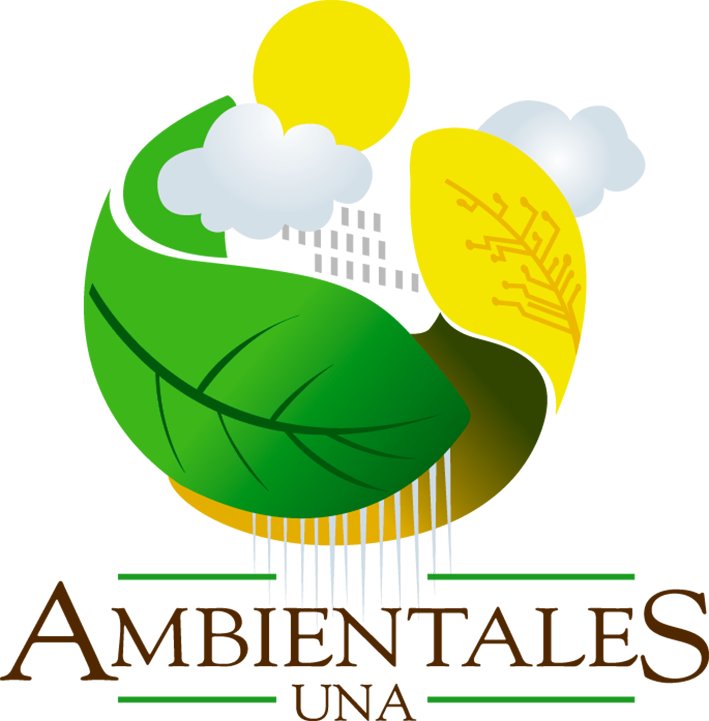 |
 |
 |
Los artículos publicados se distribuye bajo una Licencia Creative Commons Atribución 4.0 Internacional (CC BY 4.0) basada en una obra en http://www.revistas.una.ac.cr/ambientales., lo que implica la posibilidad de que los lectores puedan de forma gratuita descargar, almacenar, copiar y distribuir la versión final aprobada y publicada del artículo, siempre y cuando se mencione la fuente y autoría de la obra. |
|